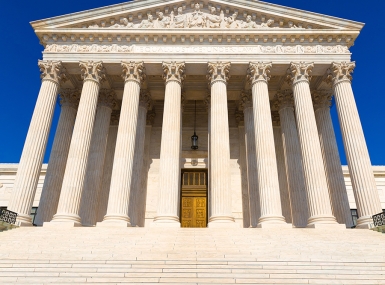EPA seeking comment on ozone designations for 2015 National Ambient Air Quality Standard
Upcoming Events
Related News

Comments are due Feb. 5 on the EPA's proposed attainment and nonattainment designations for the 2015 National Ambient Air Quality Standards for Ozone
On Jan. 5, the Environmental Protection Agency (EPA) released a notice accepting public comments on its proposed attainment and nonattainment designations for the 2015 National Ambient Air Quality Standards (NAAQS) for Ozone. The proposed 2015 ozone rule would lower the NAAQS for ozone from 75 parts per billion (ppb) to 70 ppb. Comments are due Feb. 5.
Learn More
- NACo’s Ozone Fact Sheet
- Status of pending EPA regulations of interest to counties
- EPA’s public comment no on 2015 NAAQS for Ozone Designation Recommendations
- Click here to see the partial list of counties released by EPA
Comments can be submitted here.
In November 2017, EPA preliminarily designated 2,646 counties as meeting the 2015 standards for ground-level ozone or as unclassifiable. Affected states with the remaining nonattainment areas — approximately 420 counties — were notified by EPA in December 2017 about its intended designations. The states were given 120 days to provide additional information for EPA to consider before making final decisions by April 30.
In the notice, the EPA is soliciting feedback on its proposed attainment and nonattainment ozone designations. Specifically, the agency would like to hear why an area should (or should not) be listed as either “in attainment” (meeting the 70-ppb standard), or “nonattainment” (not meeting the standard). EPA asks that any comment include assumptions or technical data; provide specific examples to illustrate concerns, and suggest alternatives; and explain views as clearly as possible to support arguments.
Under the Clean Air Act, the EPA administrator is required to make all attainment designations within two years after a final rule revising the NAAQS is published. However, the deadline for EPA Administrator Scott Pruitt to issue designations for the 2015 NAAQS for ozone passed on Oct. 1, 2017. As a result, numerous groups have already notified EPA of their intent to sue, setting the stage for litigation in the coming weeks absent further action from EPA.
Ozone is one of the six air pollutants regulated by the Clean Air Act (CAA) NAAQS program. Under NAAQS, EPA is required to reassess air quality standards every five years. Primarily known as a summertime pollutant, ozone forms when sunlight reacts with pollutants such as volatile organic compounds emitted from chemical plants, gasoline pumps, oil-based paints, and auto body and print shops. Sources of nitrogen oxides (NOx) include power plants, industrial facilities and motor vehicles.
Ozone designations can have a significant impact on county governments. Under the Clean Air Act, states and counties serve as co-regulators with the federal government and are ultimately responsible for the implementation of new and existing air quality standards. In all, 227 counties are currently regulated under ozone air quality standards.
NACo has called on EPA to delay implementation of the 2015 ozone standards until the 75-ppb standard set in 2008 can be fully analyzed for impact and will continue to work closely with Congress and the Trump Administration to craft clear, concise and workable rules that take into account the role of counties as key regulatory partners with the federal government.
Attachments
Related News

White House signs executive orders to advance nuclear power
On May 23, President Trump signed four executive orders focused on expanding the nuclear energy industry. The executive orders aim to position nuclear power as a key contributor to energy reliability, economic growth and national security — especially as artificial intelligence, advanced manufacturing and military operations increase demand for stable, high-density power sources.

U.S. Supreme Court issues unanimous decision in landmark National Environmental Policy Act case
On May 29, the U.S. Supreme Court issued a unanimous decision in Seven County Infrastructure Coalition v. Eagle County, Colorado that will reshape requirements for National Environmental Policy Act (NEPA) environment impact statements.
Interest in energy generation builds in the West
Counties are exploring the potential for energy generation on their public lands, but local control will set the stage for a tradeoff.